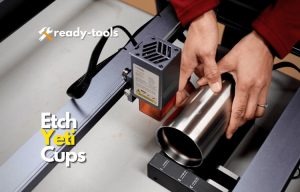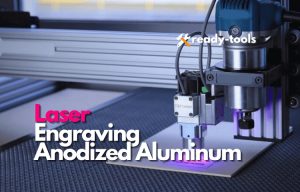Persistently marking a surface with an image using a concentrated beam of light is referred to as laser marking. Numerous lasers, such as CO2 lasers, fiber lasers, continuous lasers, and pulsed lasers, may be utilized in its execution. The following are the four most common types of laser marking:
- Annealing Laser Marking
- Foaming Laser Marking
- Carbon Migration Laser Marking
- Coloration Laser Marking
A wide variety of materials, including steel, copper, stainless steel, plastics, and rubber, may be marked with a laser marking system. It is frequently utilized to identify components and goods with alphanumeric number plates, Serial numbers, numerical codes, QR codes, and logos.
What Exactly is Laser Marking, Though?
Labeling a substance with the assistance of a concentrated beam of laser light is referred to as laser marking. The appearance of the material in the indicated region is altered to exhibit a certain pattern as a result of the interaction between the laser beam and the surface of the substance.
This is accomplished by the discoloration that occurs due to the low-powered laser beam coming into contact with the region that is being marked. The use of laser marking helps generate markings with a high level of contrast and precision, all without causing any damage to the surface of the marked substance.
The primary distinction between laser cutting, a subtractive technique that results in craters being left on the surface, and laser marking is this particular aspect of the latter.
What is the Process Behind Laser Marking?
Laser marking systems produce highly-concentrated beams lightly packed with great energy to leave a durable mark. When a laser beam strikes a surface, the energy from the beam is transmitted to the surface in the form of heat, leaving behind markings that can be black, white, or even colored.
1. Annealing Laser Marking:
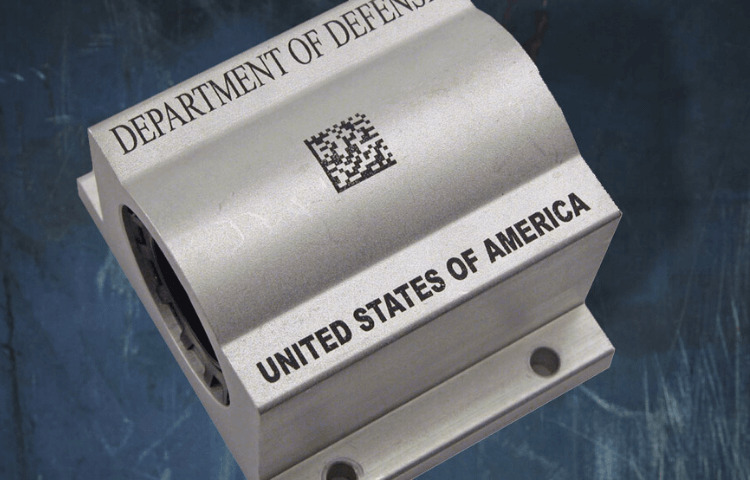
This type describes an oxidation procedure accomplished by heating to a surface layer. In most cases, the result of this kind of laser marking is a mark that is completely black and has a smooth surface. However, depending on temp at the exterior of the mark, the color of the mark can also fluctuate between hues of red, yellow, and green.
Because annealing depends only on heat to transfer the carbon form of the metal to the surface and form the marks, this process is often much more time-consuming than others. After the metal has been heated, you will need to give it time to cool down gradually.
The following is a list of typical metals that are utilized in the process of laser annealing:
- Steel.
- Titanium.
- Iron.
- Stainless steel.
In addition, this method applies to a wide range of different business sectors. However, the medical industry is the most widespread use of this technology, with extensive web tracking and branding.
2. Foaming Laser Marking:
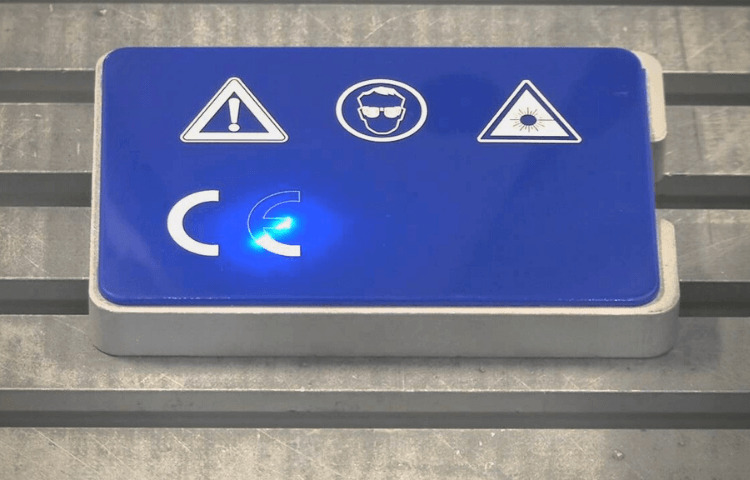
When a darker material is marked, and a lighter hue is needed as the final product, foam laser marking is utilized. This transformation of color is brought about by creating a burn on the surface that is confined and under control at the same time. When the top is melted, a cloudy environment of foamy gas bubbles is produced.
Because of how these bubbles alter the light refraction qualities of the material, foaming is a highly desirable procedure when light effects, letters, symbols, and other things are desired for the surface of a product.
Foaming is not utilized on metal; instead, it is only used on plastics. Because foaming is only in use on plastics, it is a vital asset inside the plastics industry and other industries that frequently employ plastics in their processes.
Foam laser marking has a variety of potential uses, including the following examples:
- markings on the ink cartridges
- Marking on keyboards.
- Marking on the package of cosmetics.
3. Carbon Migration Laser Marking:
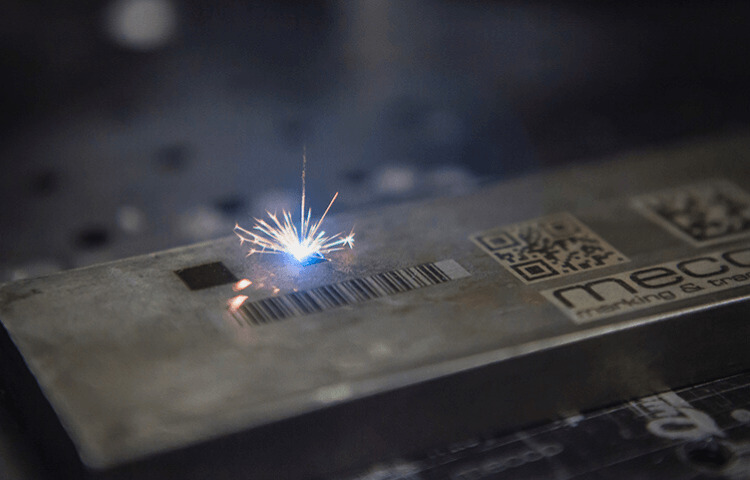
Another sort of laser marking is called carbon migration. It involves heating a metal or metal alloy, which causes the metal to form a chemical link with the carbon molecules present in the metal.
The carbon characteristics will now be on the surface of your material due to this bonding. The end effect is frequently a dark laser marking that occasionally even seems completely black when this happens.
Because it applies a significant quantity of heat to a condensed region for a shorter time and in a more concentrated fashion than annealing does, this method of marking may be completed significantly more quickly.
This particular sort of laser marking is only applicable to metals that contain carbon. Carbon migration may occur in several common metals, including the following:
- Stainless steel.
- Steel.
- Carbide.
- Titanium.
Included on the list of sectors that have found useful applications for carbon migration include, but are not limited to, the following:
- Jewelry engraving.
- Aerospace.
- Metalworking.
4. Coloration Laser Marking:
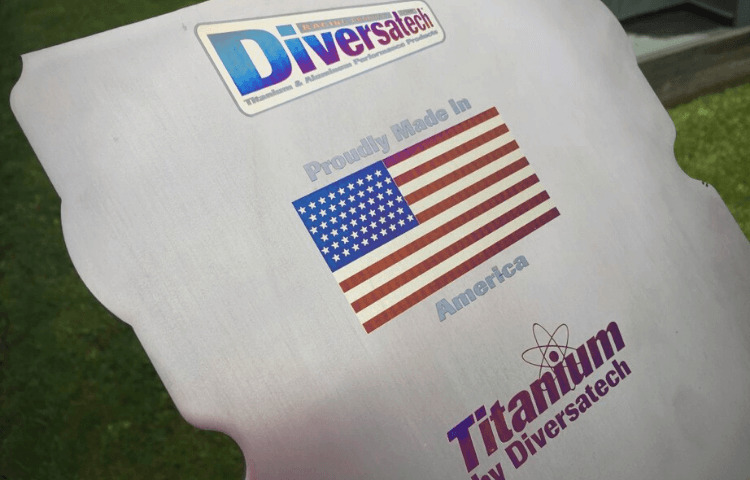
Adding color to metal and plastic, also known as coloring laser marking, is generated by heating certain surface sections based on the expected consequence. This may be done with either lasers or heat guns.
When you modify the surface by altering its pulse frequency, breadth, and other parameters, the resulting colors and tones will change, so you must have a clear idea of what you want the end outcome to be before you begin.
A foaming method can color a plastic substance after the material has already been colored in another way. When the plastic polymers are modified, the resulting color spectrum typically extends from infrared to ultraviolet on the wavelength scale.
A metal’s color can be altered by an oxidation process called patination, which can be carried out on surfaces that were either treated or left untreated in the past. This offers users greater creative leeway in the coloring results, and it may even be used in ornamental contexts.
Consequently, lasers used for colored marking can frequently function throughout various frequencies, velocities, power levels, and other parameters.
The following are some examples of different industrial applications that can make use of laser color marking:
- Making jewelry for ornamental purposes.
- Ear tags for cattle that have been colored.
- Putting different colors on the top of a bottle.
When Choosing a Laser Marking System, Here Are Some Factors to Think About:
The following are the most important factors to take into account while selecting the right model that you desire for the application you have in mind:
Line Velocity:
The rate at which individual components are being manufactured significantly impacts the kinds of outcomes that may be obtained from various systems. This is because the qualities of laser wavelengths and power fluctuate. To adequately mark all components that are currently being processed, high-speed manufacturing lines will require high wattage markers.
The Material That Has to Be Marked:
As we will see in a moment, laser markers can function on a broad range of surfaces. Your marker choice will be greatly influenced by the marked materials you intend to deal with. Fiber lasers, for instance, are excellent for working with metals, but CO2 lasers are fantastic for working with non-metals.
Environmental Circumstances:
While surroundings easily damage certain machinery at work that is prone to dust, shock, and vibrations, others are built to last and can withstand these conditions.
The Due Amount of Work:
Some laser devices have a slow processing speed and may not function well under large demand levels. For instance, to mark metals, working with fiber lasers rather than CO2 lasers could prove to be more cost-effective over the long term.
Services After the Sale is Given:
The functioning of the equipment and its setup might be challenging at times. Working with a provider with local experience or who can give prompt support is a smart consideration when deciding which equipment to buy. Even though most laser markers require relatively little maintenance and have longer lifetimes, this is true.
Laser Marking Benefits:

Compared to traditional marking technologies such as dot peen marking, inkjet, and printed labels, laser marking offers various benefits to producers. It has become the preferred technology for manufacturers wishing to do high-quality marking.
High Contrast Marks:
A laser for marking is a precise method that produces reliable results. You can get a readability rate that is extremely close to flawless by ensuring that the number of nonconform sections is maintained to a bare minimum.
Fast PDM Tech:
Because laser marking is the most advanced and quickest direct part marking technique available, it is a popular choice for situations in which low cycle durations must be satisfied.
Low Maintenance:
Because laser marking is a non-contact process, no mechanical wear happens between the system and the component that is being marked. You may reduce the amount of time spent on maintenance and downtime. Dust accumulated on the lens requires a small amount of care to be removed.
Tech That’s Also Environmentally Friendly but Does Not Require Consumables:
The use of laser marking in the industrial industry reduces the world’s reliance on resources that contribute to pollution and significantly depends on consumables. The technology behind fiber lasers is also recognized for its high electrical efficiency, which further reduces your overall impact on the environment.
Frequently Asked Questions:
Which kind of laser is utilized for the process of engraving?
Because they provide a wavelength that interacts well with metals, fiber lasers are the most effective engraving instruments for this particular task.
What is the use of green lasers for?
The GREEN laser marker was developed specifically for use in intricate and cold laser marking on surfaces that are not responsive to other wavelengths. The GREEN laser’s spot diameter is rather tiny, which provides unrivaled micro-marking quality and precision over a wide range of substrates.
Conclusion:
The technique of engraving or etching onto a substance with us is referred to as laser marking. Metal is the most typical material that is laser marked, but this marking technique may be utilized on a variety of other materials as well. This article discussed the different types of laser marking and how it comes with its own unique set of benefits and drawbacks.

